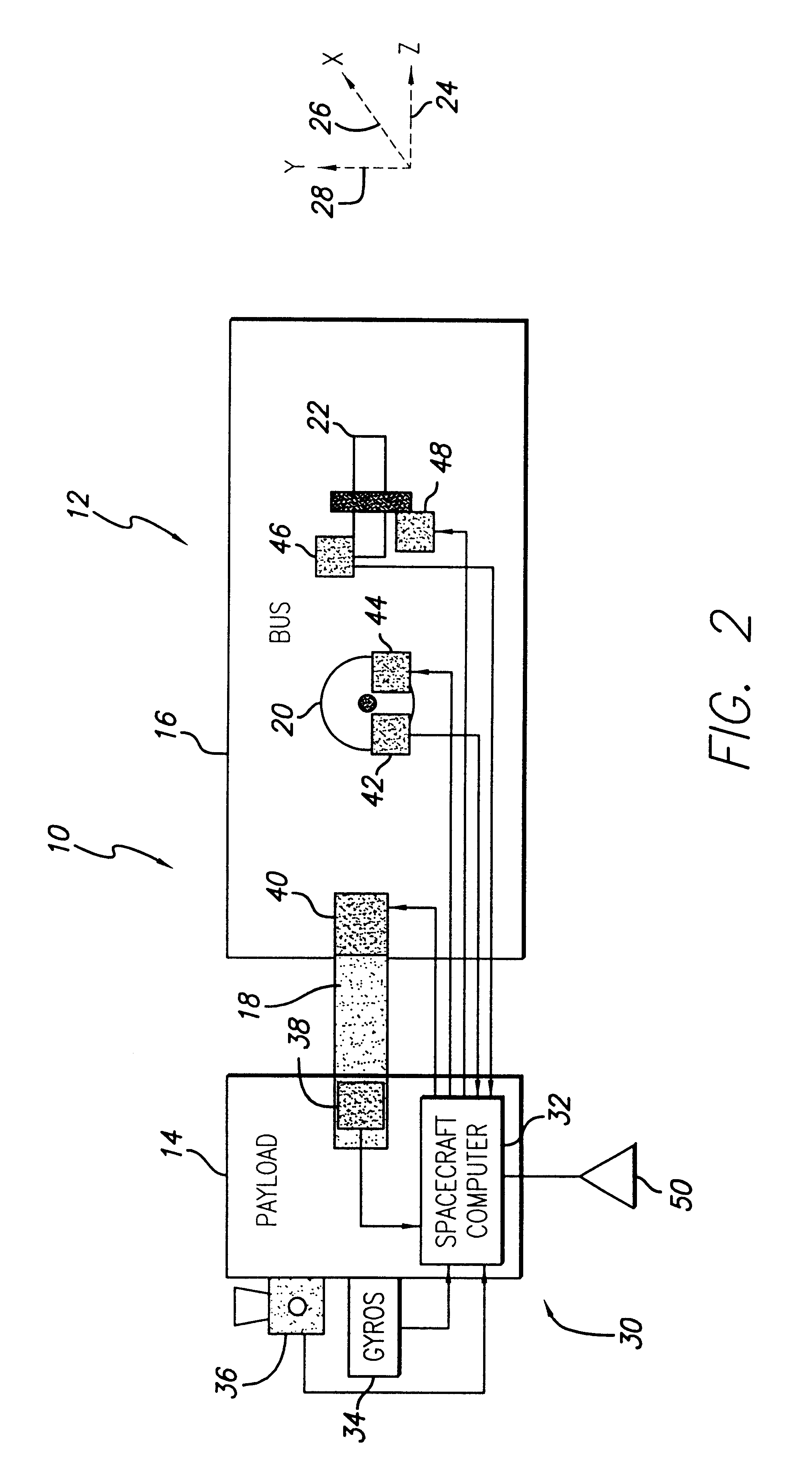System and method for controlling the attitude of a space craft
- Summary
- Abstract
- Description
- Claims
- Application Information
AI Technical Summary
Problems solved by technology
Method used
Image
Examples
Embodiment Construction
While the present invention is described herein with reference to illustrative embodiments for particular applications, it should be understood that the invention is not limited thereto. Those having ordinary skill in the art and access to the teachings provided herein will recognize additional modifications, applications, and embodiments within the scope thereof and additional fields in which the present invention would be of significant utility.
FIG. 1 is a diagram of a satellite 10 corresponding to a first embodiment of the present invention. The satellite 10 includes a payload 14 connected to an attitude control section 12. The attitude control section 12 includes a bus 16 connected at one end to the payload 14 via a Bapta joint 18. The Bapta joint 18, the bus 16, and the payload 14 are oriented concentrically along a z-axis 24. A first reaction wheel 20 and a second reaction wheel 22 are mounted at an opposite end of the bus 16 and oriented concentrically along an x-axis 26 and ...
PUM
 Login to View More
Login to View More Abstract
Description
Claims
Application Information
 Login to View More
Login to View More - R&D
- Intellectual Property
- Life Sciences
- Materials
- Tech Scout
- Unparalleled Data Quality
- Higher Quality Content
- 60% Fewer Hallucinations
Browse by: Latest US Patents, China's latest patents, Technical Efficacy Thesaurus, Application Domain, Technology Topic, Popular Technical Reports.
© 2025 PatSnap. All rights reserved.Legal|Privacy policy|Modern Slavery Act Transparency Statement|Sitemap|About US| Contact US: help@patsnap.com



